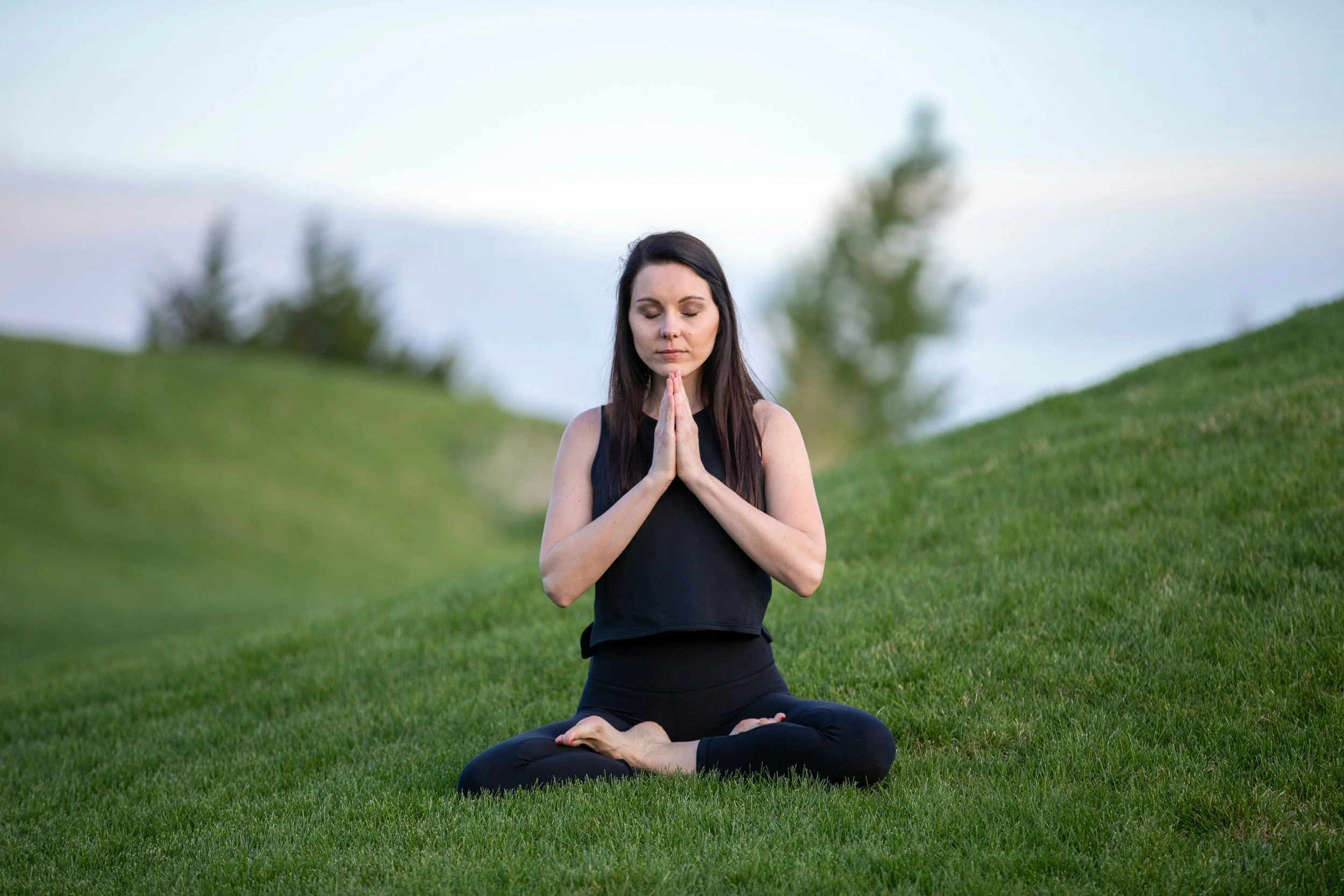By Nicole Sloane
Anxiety can feel like an unstoppable force—racing thoughts, a tight chest, and a sense of unease that lingers throughout the day. In today’s fast-paced world, it’s easy to get caught up in stress, worrying about what’s next instead of being present. Fortunately, mindfulness meditation offers a powerful way to quiet the mind, ease anxiety, and regain control over your thoughts and emotions.
Mindfulness meditation isn’t about silencing your mind completely—it’s about observing your thoughts without judgment and guiding yourself back to the present moment. Below are 10 mindfulness meditation techniques that can help reduce anxiety, improve focus, and bring more peace into your daily life.
1. Deep Breathing Meditation
An effective mindfulness practice is deep breathing meditation. When anxiety takes hold, breathing often becomes shallow and rapid, which sends signals to the brain that you are in distress. Focusing on slow, intentional breaths can trigger the body's relaxation response.
How to Practice:
Find a quiet space and sit comfortably.
Inhale deeply through your nose and hold the count for four seconds.
Hold your breath for four seconds.
Exhale through your mouth for a count of six.
Repeat for five minutes, focusing solely on the breath.
This practice calms the nervous system, helping you feel more centered and grounded.
2. Body Scan Meditation
When anxiety builds, tension often follows, creating tightness in the shoulders, jaw, and stomach. Body scan meditation is a way to release this stored tension systematically.
How to Practice:
Sit down in a comfortable position.
Close your eyes and take a few deep breaths.
Start at your toes and bring your attention to each body part, moving to your head.
Notice areas of tension without trying to change them.
With each exhale, imagine releasing tightness and discomfort.
By doing this, you train yourself to recognize physical stress signals and release them before they escalate into full-blown anxiety.
3. Labeling Your Thoughts
Anxiety thrives in uncertainty and emotional overwhelm. When thoughts spiral, labeling them helps create distance and clarity.
How to Practice:
Sit quietly and focus on your breathing.
As thoughts arise, mentally label them: “worry,” “fear,” “planning,” or “self-doubt.”
Instead of engaging with the thought, acknowledge it and return to your breath.
This technique helps you avoid anxious thoughts rather than letting them consume you.
4. The 5-4-3-2-1 Grounding Exercise
This technique is ideal for moments of intense anxiety. It anchors you in the present by engaging your senses.
How to Practice:
Identify 5 things you can see around you.
Notice 4 things you can touch (the texture of your clothes, a table, the floor).
Listen for 3 things you can hear (birds outside, a distant conversation, a fan running).
Recognize 2 things you can smell (your coffee, fresh air).
Identify 1 thing you can taste (even just the inside of your mouth).
By fully engaging with your surroundings, you interrupt anxious thought loops and reconnect with reality.
5. Loving-Kindness Meditation (Metta Meditation)
Anxiety often fuels self-criticism and negative self-talk. Loving-kindness meditation fosters compassion and inner warmth.
How to Practice:
Picture yourself and say, “May I be happy. May I be healthy. May I be safe.”
Expand this to others—loved ones, acquaintances, even difficult people—wishing them happiness and peace.
Repeat for a few minutes, feeling warmth and connection grow within.
This practice reduces self-judgment and helps shift focus from fear to love.
6. Walking Meditation
If sitting meditation feels difficult, walking meditation can be an active way to practice mindfulness.
How to Practice:
Find a quiet place to walk—inside or outside.
Walk slowly and pay attention to each step.
Notice your feet touching the ground.
Focus on the rhythm of your movement and your breath.
This technique combines gentle exercise with mindfulness, helping to release anxious energy while centering your mind.
7. Visualization Meditation
Guided imagery or visualization meditation can be a powerful tool for shifting focus away from anxious thoughts.
How to Practice:
Sit comfortably and close your eyes.
Imagine yourself in a peaceful place—a quiet beach, a mountain retreat, or a cozy cabin.
Engage your senses: What does the air feel like? What sounds do you hear?
Breathe deeply, picturing yourself absorbing this peaceful energy.
Visualization is particularly helpful for soothing the nervous system and reducing stress.
8. Noting MeditatioN
Noting meditation helps you recognize thought patterns and disengage from repetitive worry cycles.
How to Practice:
Sit comfortably and focus on your breath.
When a thought arises, mentally note what it is (worry, planning, judgment, etc.).
Let it go and return to your breath.
Labeling thoughts rather than reacting to them reduces their power over you.
9. Gratitude Meditation
Anxiety often fixates on what’s wrong or what could go wrong. Gratitude meditation redirects focus toward the positive.
How to Practice:
Sit quietly and take a deep breath.
Think of three things you’re grateful for—small or big.
Reflect on why each one matters.
Let the feeling of gratitude expand through your body.
Studies show that regular gratitude practice reduces stress and anxiety while promoting emotional resilience.
10. Single-Task Meditation (Mindful Activities)
You don’t have to sit still to practice mindfulness—single-tasking can be a meditative experience.
How to Practice:
Choose an activity—making tea, washing dishes, folding clothes.
Focus entirely on that task—the textures, smells, and movements.
Avoid multitasking; immerse yourself fully in the experience.
By bringing mindfulness to everyday moments, you train your brain to stay present rather than dwelling on anxious thoughts.
Finding What Works for You
Mindfulness meditation isn’t about perfection—it’s about practice. Not every technique will work, but experimenting and finding what resonates with you is key.
Even five minutes a day can make a profound difference in how you manage anxiety. Over time, these small mindfulness practices add up, rewiring your brain for calmness, clarity, and resilience.
Try incorporating one or two of these techniques into your daily routine, and observe how your relationship with anxiety begins to shift. You can reclaim your peace, one mindful moment at a time.


